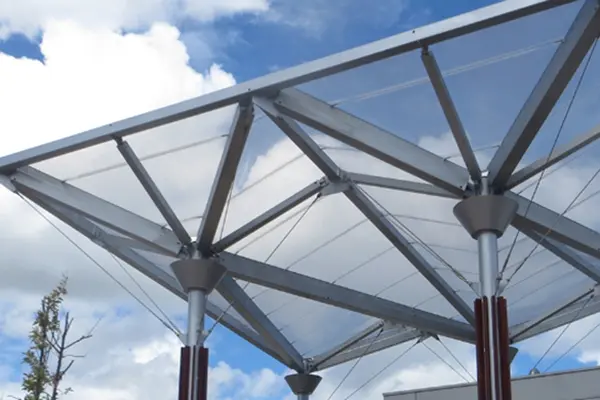Architecturally Exposed Structural Steel (AESS) is a specialized category of steel used in construction where the steel is not only functional but also serves an aesthetic purpose. Unlike conventional structural steel, which is typically hidden behind walls or ceilings, AESS remains visible and must meet higher standards of fabrication and finishing. This article explores the meaning of AESS, its characteristics, applications, and benefits.
Understanding AESS
AESS refers to steel structures designed with both structural integrity and visual appeal in mind. The term is widely used in architecture and engineering to classify steel elements that contribute to the overall aesthetics of a building. Because of its exposed nature, AESS undergoes stringent fabrication processes to ensure high-quality finishes, precision alignment, and seamless connections.

Key Characteristics of AESS
- Enhanced Finish and Appearance
- AESS requires smooth, uniform surfaces free from imperfections such as weld marks, scratches, or rust.
- The finishing process may include grinding, sanding, and painting to achieve a polished look.
- Precision Fabrication
- Unlike standard structural steel, AESS demands tighter tolerances to ensure accurate alignment and symmetry.
- Welds must be carefully executed and sometimes ground smooth for a seamless appearance.
- Special Coatings and Treatments
- AESS often undergoes protective treatments, such as galvanization or powder coating, to enhance durability and visual appeal.
- The steel may also be painted or coated to match the architectural theme of the building.
- Connection Detailing
- Bolted and welded connections in AESS structures must be visually appealing and strategically placed to maintain a clean appearance.
- Some designs incorporate hidden fasteners or decorative elements to enhance the overall aesthetics.
Applications of AESS
AESS is widely used in various architectural and structural applications, including:
- Commercial and Public Buildings
- Airports, museums, and stadiums frequently incorporate AESS to create visually striking structures.
- Exposed steel frameworks in lobbies and atriums enhance the modern and industrial appeal.
- Bridges and Canopies
- Pedestrian bridges and outdoor canopies often use AESS to combine structural strength with artistic design.
- The steel components are treated for weather resistance while maintaining their visual appeal.
- Interior Design and Decorative Elements
- Staircases, railings, and exposed beams in high-end buildings utilize AESS for an elegant and contemporary look.
- Custom steel installations in retail and hospitality spaces enhance aesthetic appeal.
Benefits of AESS
- Aesthetic Enhancement
- AESS contributes to architectural beauty by adding a modern and sophisticated touch to buildings.
- Structural Strength
- While focusing on aesthetics, AESS maintains its primary function of providing strong structural support.
- Durability
- High-quality fabrication and protective coatings enhance the longevity of AESS components.
- Design Flexibility
- AESS allows architects and designers to experiment with creative forms and intricate detailing.
Conclusion
AESS is more than just structural steel; it is a combination of functionality and artistic expression. By adhering to strict fabrication standards and design principles, AESS enhances the visual appeal of buildings while maintaining strength and durability. Whether in commercial projects, bridges, or decorative interior elements, AESS plays a crucial role in modern architecture and construction.
Post time: Feb-08-2025





